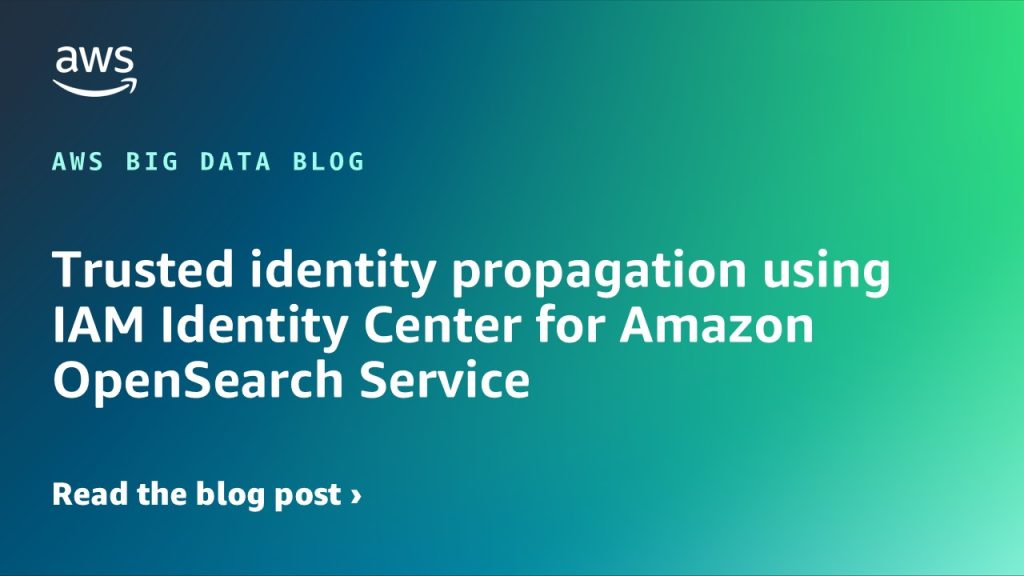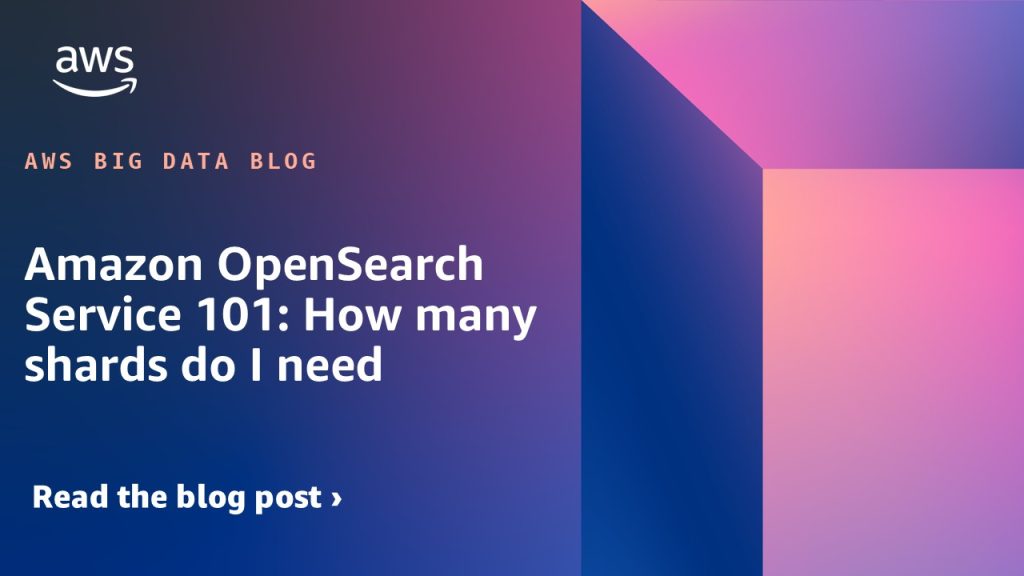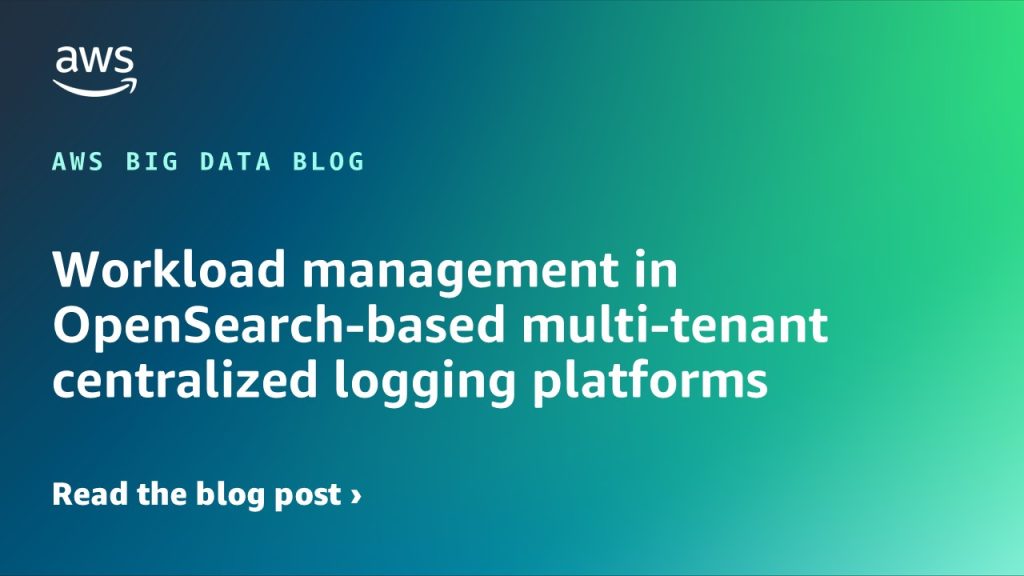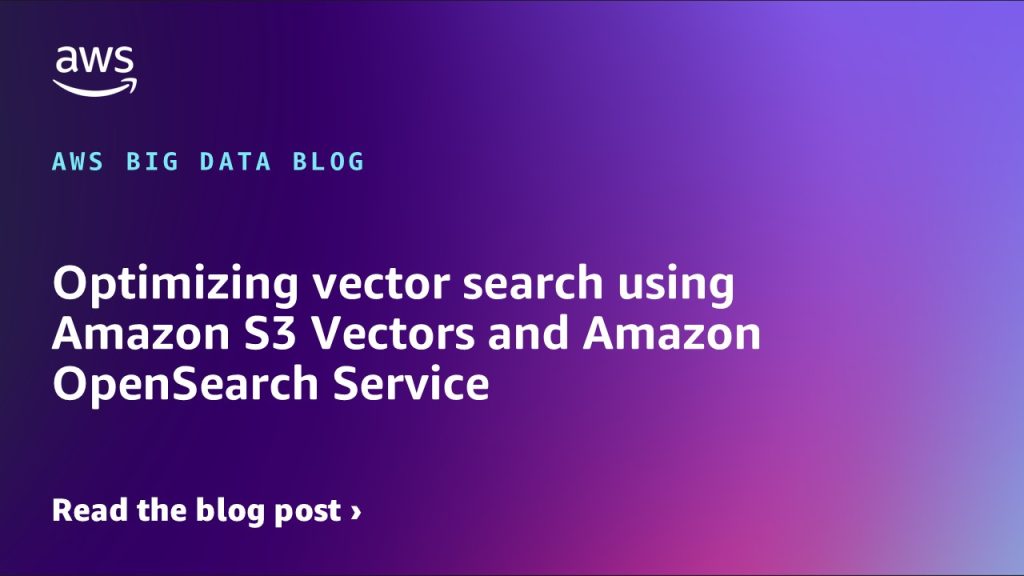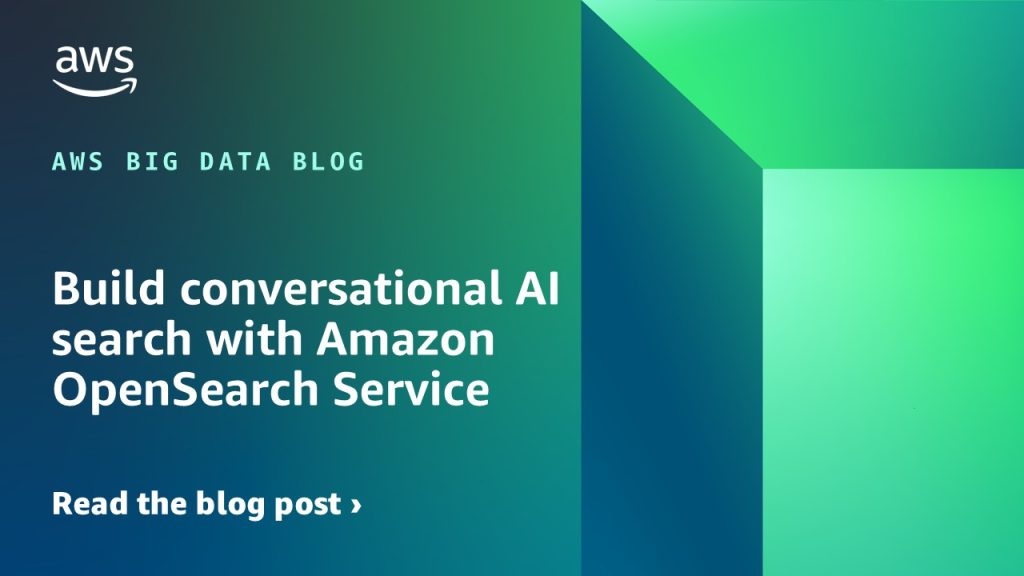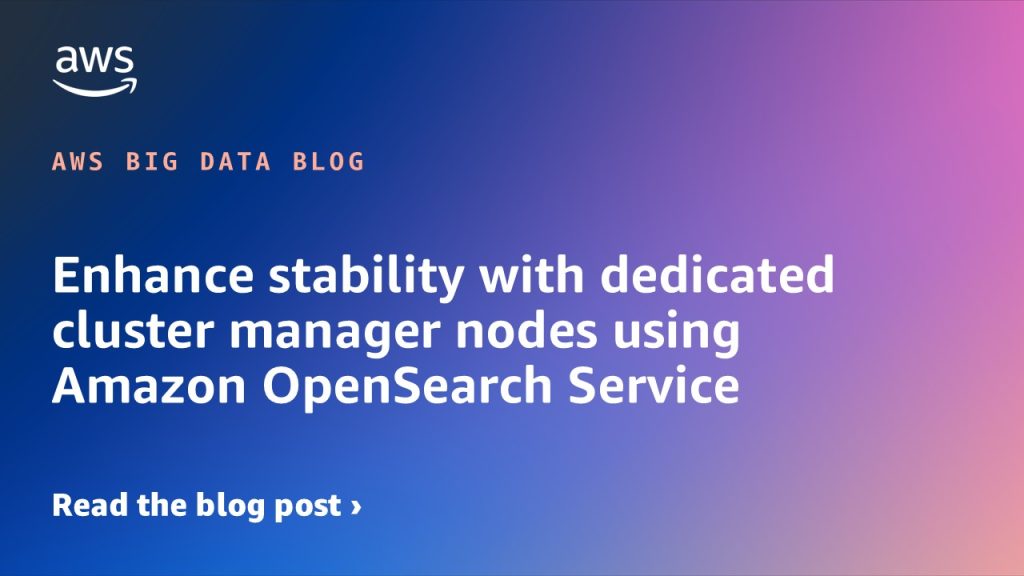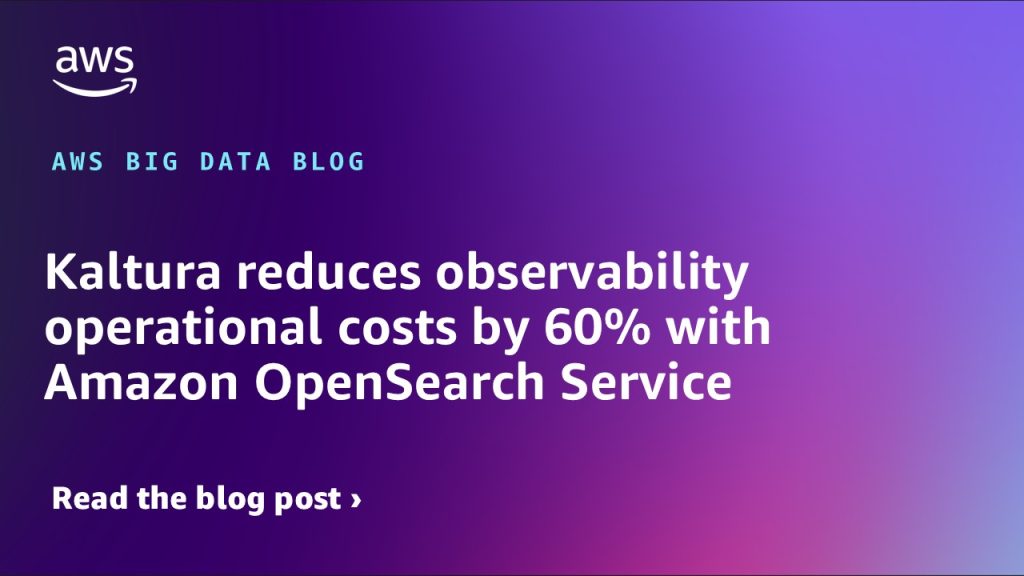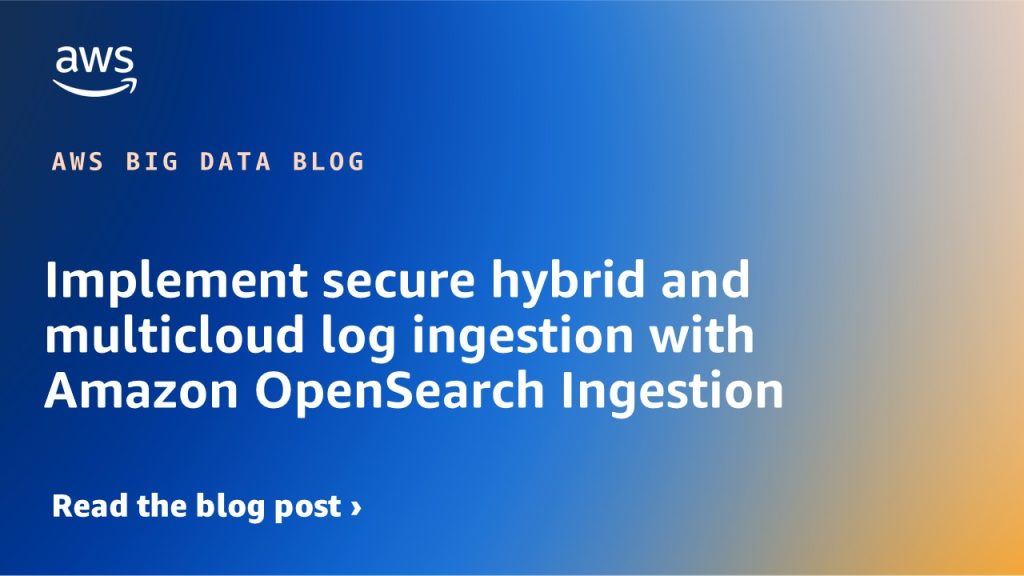AWS Big Data Blog
Category: Amazon OpenSearch Service
Trusted identity propagation using IAM Identity Center for Amazon OpenSearch Service
Now, by using trusted identity propagation, IAM Identity Center provides a new, direct method for accessing data in OpenSearch Service. In this post, we outline how you can take advantage of this new access method to simplify data access using the OpenSearch UI and still maintain robust role-based access control for your OpenSearch data.
Amazon OpenSearch Service 101: How many shards do I need
Customers new to Amazon OpenSearch Service often ask how many shards their indexes need. An index is a collection of shards, and an index’s shard count can affect both indexing and search request efficiency. OpenSearch Service can take in large amounts of data, split it into smaller units called shards, and distribute those shards across a dynamically changing set of instances. In this post, we provide some practical guidance for determining the ideal shard count for your use case.
Workload management in OpenSearch-based multi-tenant centralized logging platforms
When you use Amazon OpenSearch Service to store and analyze log data, whether as a developer or an IT admin, you must balance these tenants to make sure you deliver the resources to each tenant so they can ingest, store, and query their data. In this post, we present a multi-layered workload management framework with a rules-based proxy and OpenSearch workload management that can effectively address these challenges.
Optimizing vector search using Amazon S3 Vectors and Amazon OpenSearch Service
We now have a public preview of two integrations between Amazon Simple Storage Service (Amazon S3) Vectors and Amazon OpenSearch Service that give you more flexibility in how you store and search vector embeddings. In this post, we walk through this seamless integration, providing you with flexible options for vector search implementation.
Integrating Amazon OpenSearch Ingestion with Amazon RDS and Amazon Aurora
We are happy to announce the general availability of the integration of Amazon OpenSearch Service with Amazon Relational Database Service (Amazon RDS) and Amazon Aurora. This new integration eliminates complex data pipelines and enables near real-time data synchronization between Amazon Aurora (including Amazon Aurora MySQL-Compatible Edition and Amazon Aurora PostgreSQL-Compatible Edition) and Amazon RDS databases (including Amazon RDS for MySQL and Amazon RDS for PostgreSQL), and Amazon OpenSearch Service, unlocking advanced search capabilities such as hybrid search, ranked results, and faceted search on transactional databases.
Build conversational AI search with Amazon OpenSearch Service
Amazon OpenSearch Service is a versatile search and analytics tool. In this post, we explore conversational search, its architecture, and various ways to implement it.
Enhance stability with dedicated cluster manager nodes using Amazon OpenSearch Service
In this post, we show how to enhance the stability of your OpenSearch Service domain with dedicated cluster manager nodes and how using these in deployment enhances your cluster’s stability and reliability.
Kaltura reduces observability operational costs by 60% with Amazon OpenSearch Service
In this post, we share how Kaltura transformed its observability strategy and technological stack by migrating from a software as a service (SaaS) logging solution to Amazon OpenSearch Service—achieving higher log retention, a 60% reduction in cost, and a centralized platform that empowers multiple teams with real-time insights.
Amazon OpenSearch Service 101: Create your first search application with OpenSearch
In this post, we walk you through a search application building process using Amazon OpenSearch Service. Whether you’re a developer new to search or looking to understand OpenSearch fundamentals, this hands-on post shows you how to build a search application from scratch—starting with the initial setup; diving into core components such as indexing, querying, result presentation; and culminating in the execution of your first search query.
Implement secure hybrid and multicloud log ingestion with Amazon OpenSearch Ingestion
In this post, we demonstrate how to configure Fluent Bit, a fast and flexible log processor and router supported by various operating systems, to securely send logs from any environment to OpenSearch Ingestion using IAM Roles Anywhere.
